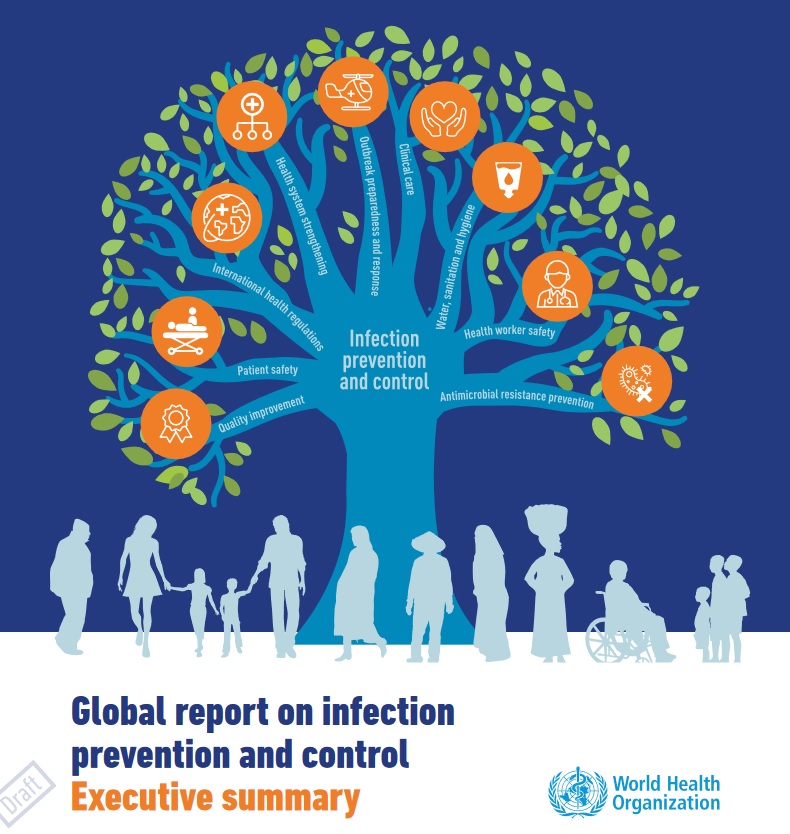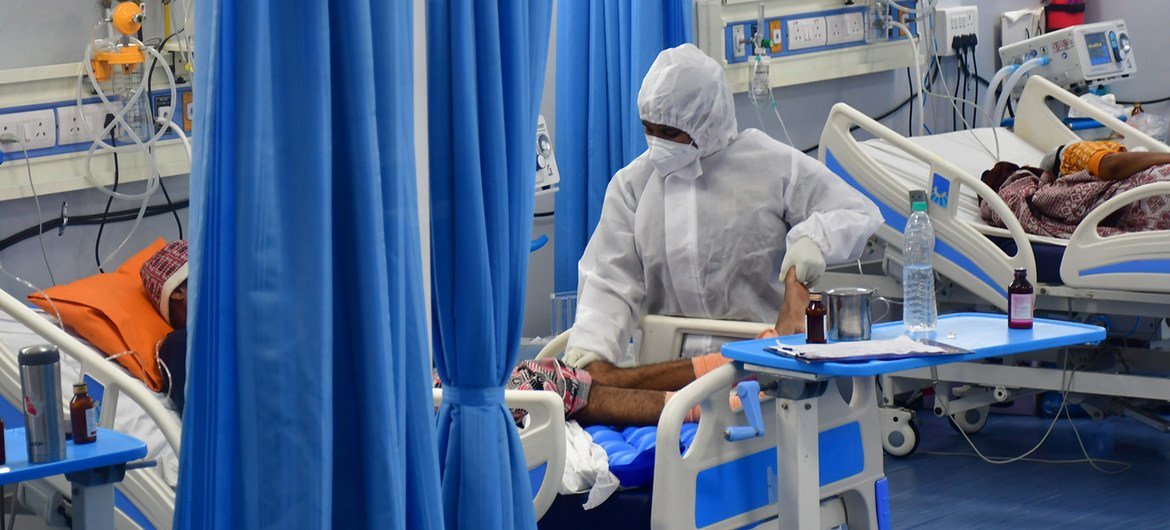
If sufficient attention is not paid to infection prevention and control, health care centers can become propagators of this type of disease, harming patients, health workers and family and friends of the sick, the World Organization warned this Friday. of Health (WHO).
A new study by the UN agency revealed that, depending on the country where they are located, between seven and 15 out of every hundred hospitalized patients acquire at least one infection associated with medical care during their hospitalization, and that an average of 10% die. as a consequence of it.
“ No country or health system , no matter how sophisticated, can claim to be free of the problem of health care-related infections,” the text states.
However, good hand hygiene practices and other similar measures can prevent 70% of these infections, the WHO stated.
According to the report, people in intensive care and newborns are at higher risk of acquiring an infection.

© UNICEF/Bhushan Koyande. COVID-19 patients in an intensive care unit in Mumbai, India.
Sepsis cases
The document also details that about 25% of sepsis cases treated in hospitals and almost half of sepsis cases with organ dysfunction admitted to adult intensive care units are related to medical care .
For WHO Director-General Tedros Adhanom Ghebreyesus, the COVID-19 pandemic has exposed many failures and challenges in infection prevention and control in all regions and countries, including those that had the most advanced protocols.
“Our challenge now is to ensure that all countries can allocate the human resources, supplies and infrastructure that infection prevention and control programs require,” said Dr. Tedros.
Few countries meet the requirements
Data from the WHO system to monitor countries’ progress towards implementing the global action plan on antimicrobial resistance showed that for the period 2020-2021, 11 % of nations still did not have an operational prevention plan and infection control and 54% had a program that was not implemented or was only followed in selected health centers. Most Latin American countries are included in this category.
Only 34% reported having a national plan to prevent and control infections in place and of those, only 19% had a system to monitor its compliance and effectiveness.
In the last five years, the agency carried out global surveys to evaluate the status of implementation of national infection prevention and control programs, finding that for the 2020-2021 biennium only 3.8 % of countries met all the minimum requirements implemented at the national level.
The study indicates that the impact of infections associated with health care and antimicrobial resistance is incalculable, alluding to the fact that each year more than 24% of patients affected by sepsis related to health care die, plus 52, 3% of patients treated in an intensive care unit.
These deaths double or triple when infections are resistant to antimicrobials, he adds.
The WHO emphasizes the importance of handwashing for health personnel
Progress, despite everything
The UN agency maintains that, despite everything, some progress has been made, citing that more countries are allocating staff and budget to infection prevention and control programs and training front-line health workers, as well as that have developed national guidelines and programs for the surveillance of healthcare-associated infections and hand hygiene compliance.
WHO and its partners support governments of many States to strengthen their strategies, establish minimum requirements and acquire basic components of infection prevention and control programs.
In this regard, the report stressed that urgent investments are needed to maintain and extend this long-term assistance.
The World Health Organization urged all countries to boost investments in disease prevention and control programs to protect patients and health workers, improve health care and reduce its costs for all.















